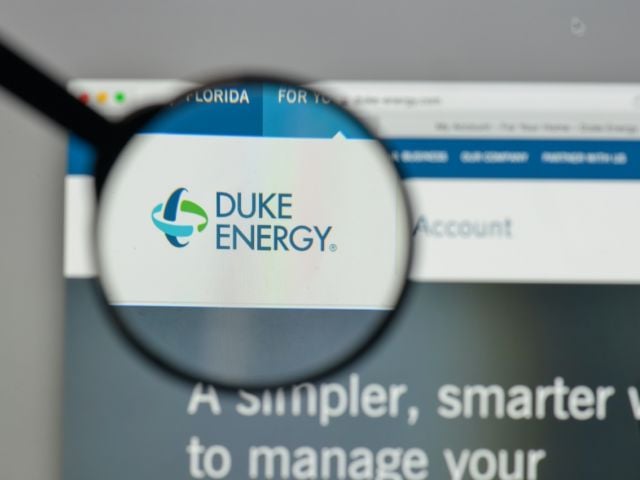WASHINGTON – Since 2013, Duke Energy and its partners have scrapped natural gas pipelines and nuclear power plants totaling $11.6 billion, according to a new report by the Environmental Working Group.
For most businesses, this record of blowing billions of dollars on one failed project and boondoggle after another would send finances reeling and the executives in charge packing.
But not when you are the nation’s largest investor-owned electric utility, with a captive ratepayer base of 7.7 million across six states, and state lawmakers and regulators in your pocket who let you pass those losses onto customers through new fees and rate increases.
The latest example of Duke’s habit of wasting billions on a project fated for the scrap heap is the decision in July by Duke and Dominion Energy to cancel construction of the Atlantic Coast Pipeline, whose estimated cost had escalated to $8 billion. Six months earlier, Duke and three partners cancelled the Constitution Pipeline, which would have carried fracked natural gas to customers in New York and Pennsylvania, at an estimated cost that had swelled to $1 billion.
Despite the pipelines’ cancellation and the billions in losses, Wall Street has not soured on Duke. Analysts consider the Atlantic pipeline’s cancellation a one-time hit and still view Duke as a sound investment, thanks to its 7.7 million captive customers and its plans to raise their rates.
In an effort to recoup $1.6 billion in losses from the Atlantic pipeline and replace the lost capital spending, Duke executives told analysts on its second quarter earnings call that in the near term it will spend another $2 billion on new projects, including natural gas operations, in hopes it will be profitable enough to fill the gap, as part of a longer-term $56 billion investment plan.
But Duke knows the future of its business model is precarious. In its annual report to the federal Securities and Exchange Commission, the utility warns investors that its profits could be threatened by the climate crisis, tougher clean air regulations, a serious nuclear accident and shrinking demand for electricity as customers go solar and invest in efficiency.
“Duke’s priority, first and foremost, is to achieve and maintain a high profit margin, not to provide affordable service with a least cost approach to its customers,” said EWG Senior Energy Policy Advisor Grant Smith, co-author of the report. “While other utilities are shedding costly, dangerous and climate-disrupting energy sources for clean, safe, cost-efficient renewables, Duke continues to waste billions with its high-risk, high-reward gambles.”
In addition to Duke’s cancelled pipelines, the utility has, with regulators’ complicity, unloaded billions on customers for failed nuclear and coal-to-gas projects.
“Duke Energy’s 'build plants, raise rates' business model ties up billions of dollars and many years that we don’t have if we are going to avert the worst outcomes of the climate crisis,” said NC WARN Assistant Director Rita Leadem. “Meanwhile, people of color and low-wealth communities bear the brunt of health and economic impacts of Duke Energy's fossil fuel addiction.”
One of the biggest boondoggles is Duke’s Edwardsport coal-to-gas plant in Indiana. The plant’s initial cost estimate, in 2006, was $1.6 billion. By 2012 it had ballooned to more than $3.5 billion. Corruption was rampant, with Duke executives engaging in illegal communications with the chair of the state regulatory commission.
“Duke Energy’s Edwardsport IGCC boondoggle is the posterchild for corruption and malfeasance,” said Citizen Action Coalition Indiana Executive Director Kerwin Olson. “It was made possible only because of Duke’s monopoly stranglehold and oversized influence on the State of Indiana. Captive Hoosier ratepayers should not be forced to continue paying confiscatory rates for decades to come for a project which never should have been approved to begin with.”
The plant went into operation in 2013. But by then it was already obsolete, as wind power capacity in the state was three times Edwardsport’s generation capacity.
Failed, costly projects like the ACP and the Edwardsport plant are business as usual for Duke, from the cancelled Lee nuclear plant in South Carolina to the cancelled Levy and shuttered Crystal River nuclear plants in Florida.
Plans for the construction of the Levy plant first began in 2006 under Progress Energy, which merged with Duke in 2012. The original estimate was $5 billion to $6 billion. By the time of the merger, the price tag had grown to $24 billion and the in-service date was pushed back eight years, to 2024.
Even in the face of overruns nearly five times higher than the original cost estimates, Duke was unfazed, pressing the Nuclear Regulatory Commission for a license to build and operate the plant. The NRC granted Duke’s request in 2016, but that same year the utility announced it would halt production. Florida regulators allowed Duke to charge customers $800 million for a plant that never delivered a kilowatt of electricity.
To drag Duke and other utilities into the clean energy future, politicians and regulators must disrupt the monopoly model that has ceded control of energy to profit-first corporations. Electricity rates should be tied to efforts to increase efficiency and promote renewables like rooftop and community solar – both of which Duke has fought to deny the captive ratepayers in its vast expansive service area. And stockholders, not ratepayers, should bear the costs and risks of big capital projects.
###
The Environmental Working Group is a nonprofit, non-partisan organization that empowers people to live healthier lives in a healthier environment. Through research, advocacy and unique education tools, EWG drives consumer choice and civic action. Visit www.ewg.org for more information.


